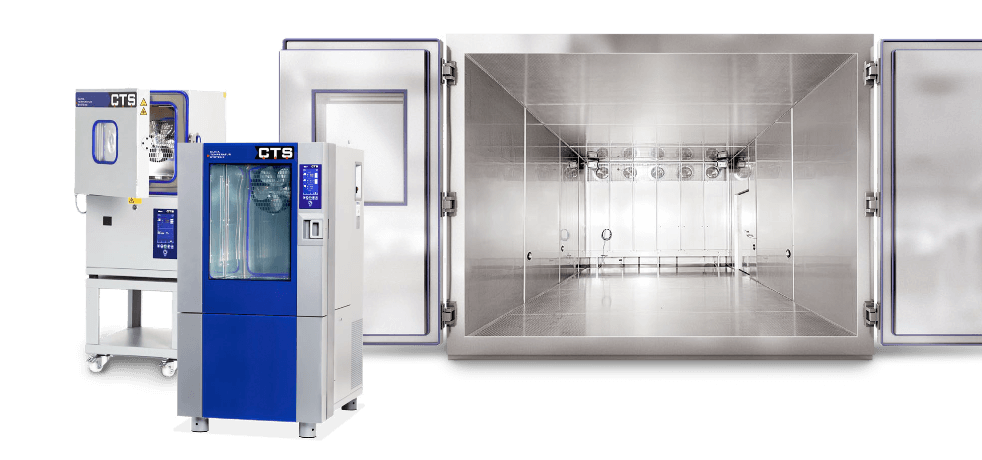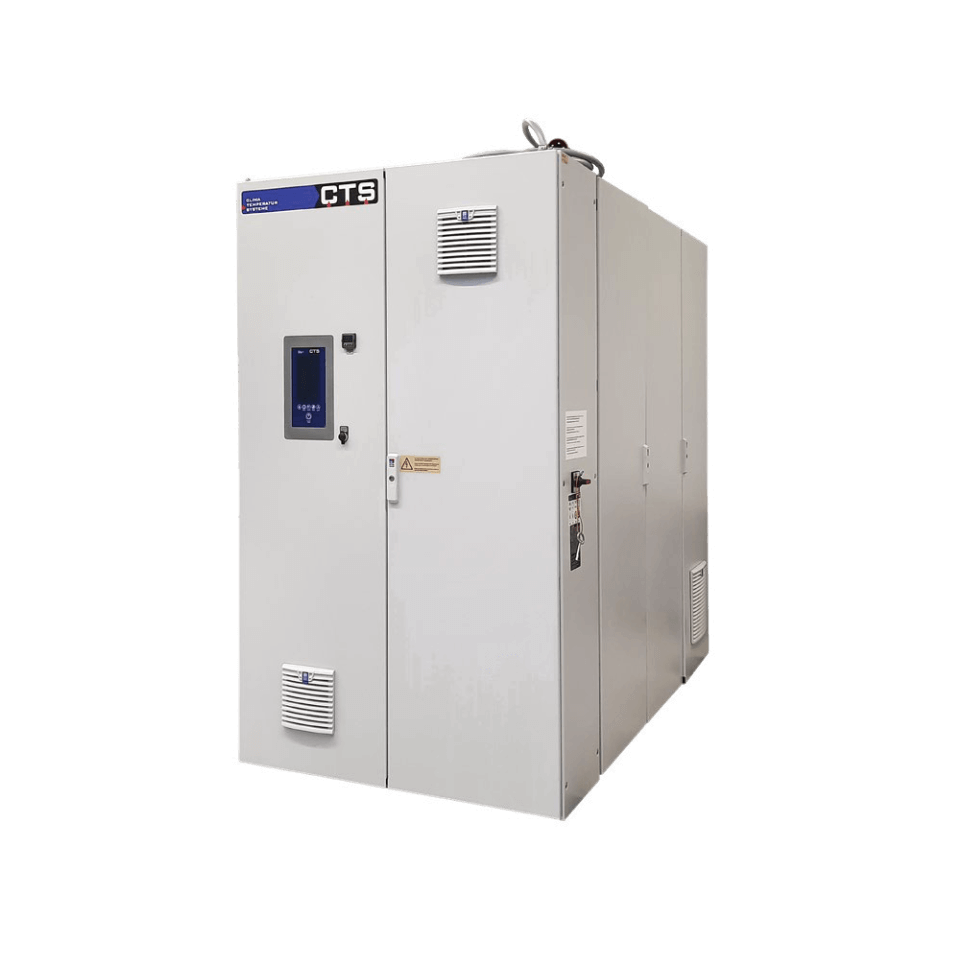Type TR water/glycol temperature control devices
Environmental simulations in the e-mobility sector
Water/glycol temperature control is particularly required for testing components in the field of e-mobility such as electric motors, inverters and batteries. This is to simulate the cooling water circuit that is used in a real vehicle to cool or control the temperature of these components, and to achieve accelerated temperature changes in the components while testing their performance, function or endurance in a temperature or climate test chamber. In addition, most of the heat generated by the test item is dissipated via the cooling medium.
CTS temperature control devices for various requirements
CTS offers a wide range of high-performance, high-precision temperature control devices. Depending on the temperature range and requirements, CTS can provide pressureless or pressure-blanketed, single or multi-circuit systems, with the temperature of each circuit controlled separately or together and with a performance designed to suit each specific application. The volume flow rate and temperature can always be controlled with extreme precision.
Temperature ranges
Performance ranges
Volume flow rate range
Number of temperature control systems
The main basic equipment of temperature control
- Temperature control systems with circulation pump
- Supply and return pipes with manual stop valves
- Temperature measurement and control of the inlet temperature; in the case of multi-circuit systems, the temperature of the circuits can be controlled separately or together
- Temperature measurement in the return pipes
- Flow measurement in the supply pipe
- Flow control via three-way mixing valve
- Pressure control (for the pressure-blanketed version)
- Container with water/glycol mixture to fill the circuits
- Optional automation of the filling and emptying process
- Compact device with integrated machine group and switch cabinet
Main options of CTS devices
- Independent temperature limiter
- Automated filling and emptying process
- Pressure measurement in supply and return pipes




